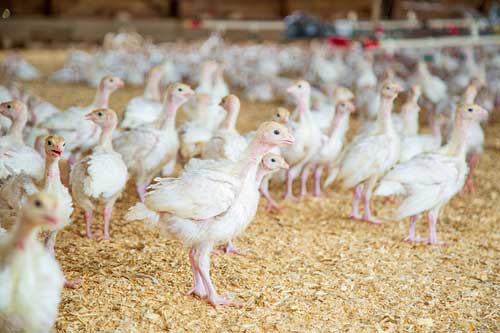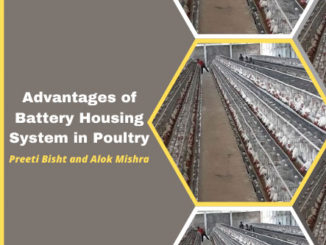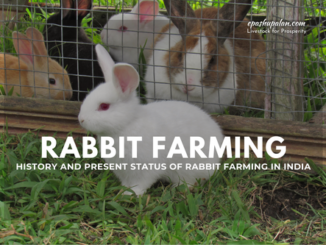The development of Indian Poultry Industry is remarkably fast. On comparison with other Animal Husbandry sectors like Dairy, the leaps and bounds of this development is definitely commendably appreciable because this is a true private success story of the whole industry without the involvement of schemes and subsidies of the government like ‘operation flood’ of Dairy sector. We have to openly thank all the dedicated pioneers of poultry sector of India in general, Tamil Nadu in particular.
But it is surprisingly sad to note that the vaccines used in the poultry field, even now, are as old as those used in the childhood of the field.
For Marek’s disease, we use the egg embryo HVT (Herps Virus of Turkey) strain as vaccine on the basic principle that a pathogenic strain of one species (Turkey) is used in unnatural host (Poultry). In Ranikhet (New castle) disease, the good old lentogenic and mesogenic strains are used as vaccine on the principle of immunity by creating a mild disease. For Fowlpox also, the very same disease causing strain is being used as vaccine on the principle that the strain may not produce typical disease on artificial inoculation (vaccination). In IBD also, “low pathogenic” and “high pathogenic” (and now intermediate) strains are used as vaccines. For ILT, a pathogenic strain is given as vaccine by inoculating through an unnatural route. Thus almost all strains of any poultry vaccine now used are invariably the naturally occurring pathogenic strains for the poultry. For using them as vaccine, they are either selected as unnatural strain or following an unnatural route of inoculation or by selecting low or mild pathogenic strains.

These points are not away from the purview of one relevant question– that is, is it not true these vaccines are satisfactorily potent? Yes. It is absolutely true that the potency of these vaccines are more than satisfaction. But my point is that potency is not the only criteria that is required of a good vaccine. If we study the F-I schedule of the Drug and Cosmetic Control Act, there is one requirement that the vaccine should be safe and passed for the safety test. Approval of potency test is related to only one disease for which the vaccine is used. Safety test, though simple, involves a broader perspective.
HVT vaccine for Marek’s disease in poultry, though protects against the overt expression and pathogenicity of the disease for the bird for which it is given, it does not kill the Marek’s virus or does not prevent the super infection of the pathogenic Mareks’s virus. Shedding of these viruses may be infective to the neighbouring unvaccinated populations. Mesogenic strains of Ranikhet like R2B and K used as vaccine for stocks above 8 weeks of age, may produce the actual Ranikhet disease in 2-3 percent of the vaccinated population with even severe lesions confusing towards velogenic outbreak of the disease. This mesogenic vaccines are not indicated for stocks below 8 weeks of age.

The “low pathogenic” vaccine of IBD will not work for chicks having meternal antibody and will be effective only when meternal antibody for IBD is absent in the chicks. Guarantee of hatchery chicks with ‘NIL’ antibody for IBD is not in the hands of commercial layer farmers. If you take “High Pathogenic” vaccine of IBD, it will work as good vaccine only for those chicks having maternal antibody. A serious problem in this “high pathogenic” IBD vaccine is that it will produce the disease in those chicks which are not having maternal antibody for IBD. In ILT and Fowlpox also, shedding of vaccine virus may be infective to unvaccinated neighbouring population. Again, all these vaccines carry a general risk of “over dosage”.
A good vaccine should have the advantage like the ones in Tissue Culture Rinderpest Vaccine (TCRV), a live attenuated tissue culture vaccine used for cattle for Rinderpest disease. Before the development of this vaccine we were using Goat Tissue Rinderpest Vaccine (GTRV). Though GTRV is a very good potent vaccine for Rinderpest in cattle, it should not be used in sheep and goats for Rinderpest, because it will produce the disease in sheep and goats.
The development of TCRV is definitely a breakthrough in Rinderpest reality. Without TCRV, we could not have controlled and eradicated the devastating disease, Rinderpest. TCRV has no contraindications. It can be used in any species, any age and in any physiological condition. It has zero risk of over dosage. Presence or absence of maternal antibody will not predispose to any ill-effect. Is there any poultry vaccine comparable to TCRV…? Not only in India, no where I could hear such vaccines for poultry.
Why not these factors be the reason for the chronic problems in commercial layer farms. Though many farms in Namakkal are achieving 305 eggs with 95 g of daily feed intake in Babcock, better than the 105 g of daily feed intake specified by the Breed, there is always an unexplainable gap between the actual egg yield and expected egg yield, if the total layer population is compared with the total egg yield in Namakkal. As a microbiologist, my biotechnological point is that the poultry problem in Tamil Nadu is not the disease or the managemental problems. It is because of the vaccines used. If so, the agonizing aspect is that the layers are, even if normal and healthy, subjected to 12 to 13 different occasions because in a commercial layer life totally 12 to 13 such vaccines worry the birds.
It is an urgent need for the development of newer and safer vaccines for poultry. I would like this topic to be discussed in deeper depths.






Be the first to comment